DHI
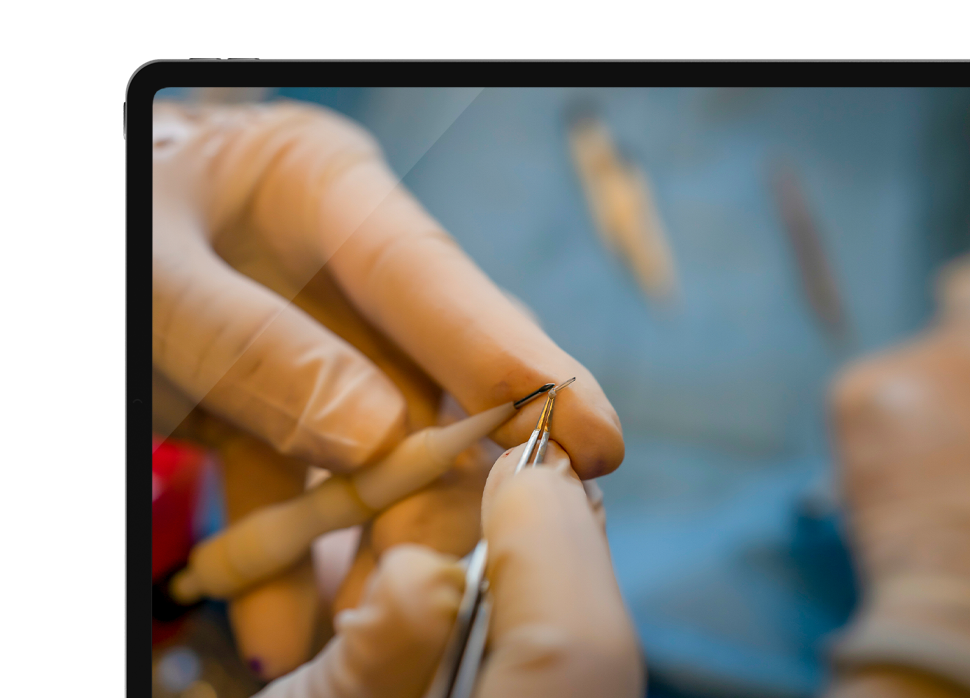
DHI (Direct Hair Implantation)
DHI (Direct Hair Implantation) is not a new technique. In fact, it’s an improved version of FUE hair implantation, encompassing the same procedural steps and outcomes. In a FUE hair transplant, the doctor creates channels over the recipient area using sapphire blades and places the grafts into the opened channels. In contrast, the DHI method employs a tool resembling a ballpoint pen to insert the grafts into the recipient area without creating any channels. This tool is called the Choi pen.Let us examine the process of DHI. A DHI hair transplant is performed using a Choi pen during implantation. This compact device, shaped like an interlocking ballpoint pen, has an outer Teflon coating and is designed to withstand temperatures of up to 130 degrees Celsius. The needle at the end of the pen is used to place the grafts. The needle resembles an injector but is vertical, with serrated endpoints. The serrated ends are designed in this way to facilitate the placement of hair grafts into the needle prior to the transplant.TIn the DHI hair transplant technique, 4 to 6 Choi pens are used, classified by color into red, blue, and white, according to the graft sizes, which are categorized as thick, medium, and thin. This method consists of three main stages:
Stage One: Hair Follicle Extraction
The process begins by identifying the donor area, usually located at the back or sides of the scalp, where hair follicles are more resistant to shedding. A precise device called a micro motor is used to extract individual hair follicles without causing large wounds or visible scars. Each follicle is carefully extracted to preserve its integrity and ensure its effectiveness for transplantation.
Stage Two: Follicle Preparation and Preservation
Immediately after extraction, the follicles are placed in a specialized medical solution designed to maintain their vitality and activity. This solution helps reduce dehydration and increases the chances of a successful transplant. The follicles are then sorted based on the number of hairs per follicle (e.g., single, double, or multiple hairs). This classification aids in meticulous planning of the transplantation, ensuring the most suitable follicles are selected for each scalp area, considering hair density and natural appearance.
Stage Three: Loading Follicles into Choi Pens and Implantation
The follicles are transferred from the solution into the Choi pen, a specialized tool equipped with a very fine needle at its tip. A trained team carefully loads each follicle into the needle, taking great care not to damage the follicles during the process. The specialist then implants the follicles directly into the target areas, inserting the needle at precise angles and depths to guarantee natural hair growth direction. Each follicle is implanted individually, and gentle pressure on the pen helps insert the follicle smoothly into the skin without the need for large incisions or cuts on the scalp. This procedure is repeated until the desired number of follicles are implanted, achieving a natural and uniform coverage of the bald areas. It is crucial to highlight that, as with any procedure, a DHI hair transplant should be performed by a qualified expert to ensure that each follicle is placed at the correct angle, depth, and direction for natural-looking results. Apart of that to minimize the risk of complications like infection or scarring.
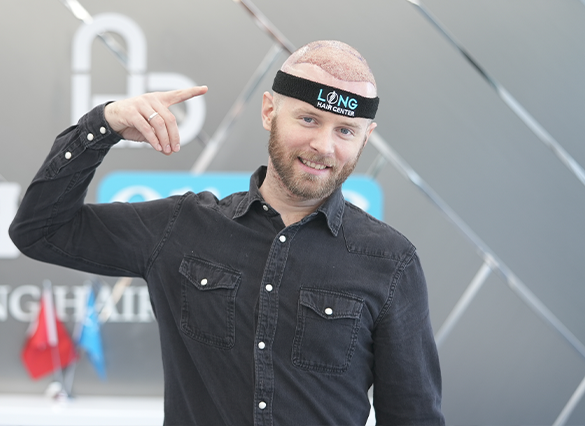
DHI (Direct Hair Implantation)
DHI (Direct Hair Implantation) is not a new technique. In fact, it’s an improved version of FUE hair implantation, encompassing the same procedural steps and outcomes. In a FUE hair transplant, the doctor creates channels over the recipient area using sapphire blades and places the grafts into the opened channels. In contrast, the DHI method employs a tool resembling a ballpoint pen to insert the grafts into the recipient area without creating any channels. This tool is called the Choi pen.Let us examine the process of DHI. A DHI hair transplant is performed using a Choi pen during implantation. This compact device, shaped like an interlocking ballpoint pen, has an outer Teflon coating and is designed to withstand temperatures of up to 130 degrees Celsius. The needle at the end of the pen is used to place the grafts. The needle resembles an injector but is vertical, with serrated endpoints. The serrated ends are designed in this way to facilitate the placement of hair grafts into the needle prior to the transplant.TIn the DHI hair transplant technique, 4 to 6 Choi pens are used, classified by color into red, blue, and white, according to the graft sizes, which are categorized as thick, medium, and thin. This method consists of three main stages:


Il metodo DHI consiste nel seguente processo:
Design dell'attaccatura dei capelli.
Anestesia.
Estrazione degli innesti.
Impianto degli innesti utilizzando penne Choi.
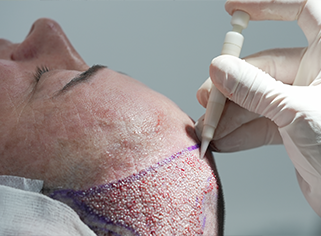

Vantaggi:
bPosizionamento accurato degli innesti: DHI consente un controllo preciso sull'angolo, la direzione e la profondità dell'impianto del follicolo pilifero, ottenendo un'attaccatura dei capelli dall'aspetto naturale.
bMeno invasivo: Il DHI comporta una gestione minima degli innesti e non richiede la creazione preventiva di canali sulle aree riceventi.
bNessun bisturi: La tecnica DHI non prevede l'uso del bisturi, il che porta a meno cicatrici e a tempi di recupero più rapidi.
bMaggiore sopravvivenza degli innesti: Poiché gli innesti vengono impiantati immediatamente dopo l'estrazione, il loro tasso di sopravvivenza può essere più elevato rispetto alle tecniche in cui gli innesti vengono conservati prima dell'impianto.
bAdatto a vari tipi di capelli: DHI può essere utilizzato per diversi tipi di capelli, compresi quelli ricci o ondulati, poiché l'impianto preciso consente risultati naturali.

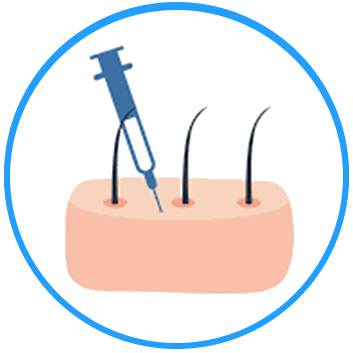
Svantaggi:
bTecnica unica: La tecnica di impianto diretto di capelli (DHI) è un po' più complessa dei metodi di trapianto di capelli di base e richiede medici e un team specializzato con formazione e competenze specifiche.
bQuantità di innesto limitata: A causa della natura sensibile del tempo della procedura, il DHI potrebbe non essere l'ideale per sessioni di innesto molto grandi in un'unica seduta..
bCosto più elevato: La tecnica avanzata e l'esperienza richiedevano costi più elevati rispetto ad altri metodi di trapianto di capelli.
bDurata prolungata del processo.: L'esecuzione del DHI richiede tempo perché ogni innesto deve essere posizionato con molta attenzione.
bRisultati basati sull'abilità: L'efficacia del metodo DHI dipende molto dalla competenza e dall'esperienza del team medico. Ciò può comportare diversi livelli di successo quando diversi professionisti utilizzano il metodo.
I NOSTRI TRATTAMENTI
LE NOSTRE TECNOLOGIE
DHI
DHI (Direct Hair Implantation) non deve essere considerato un nuovo metodo, ma una forma modificata di impianto di capelli FUE che comporta la stessa processi e risultati. Nel trapianto di capelli FUE, il medico crea dei canali sull’area ricevente utilizzando lame di zaffiro e vi inserisce gli innesti i canali aperti. Nel metodo DHI, invece, il medico utilizza uno strumento simile ad una penna a sfera per inserire gli innesti nel ricevente area senza creare alcun canale. Questo strumento si chiama penna Choi.
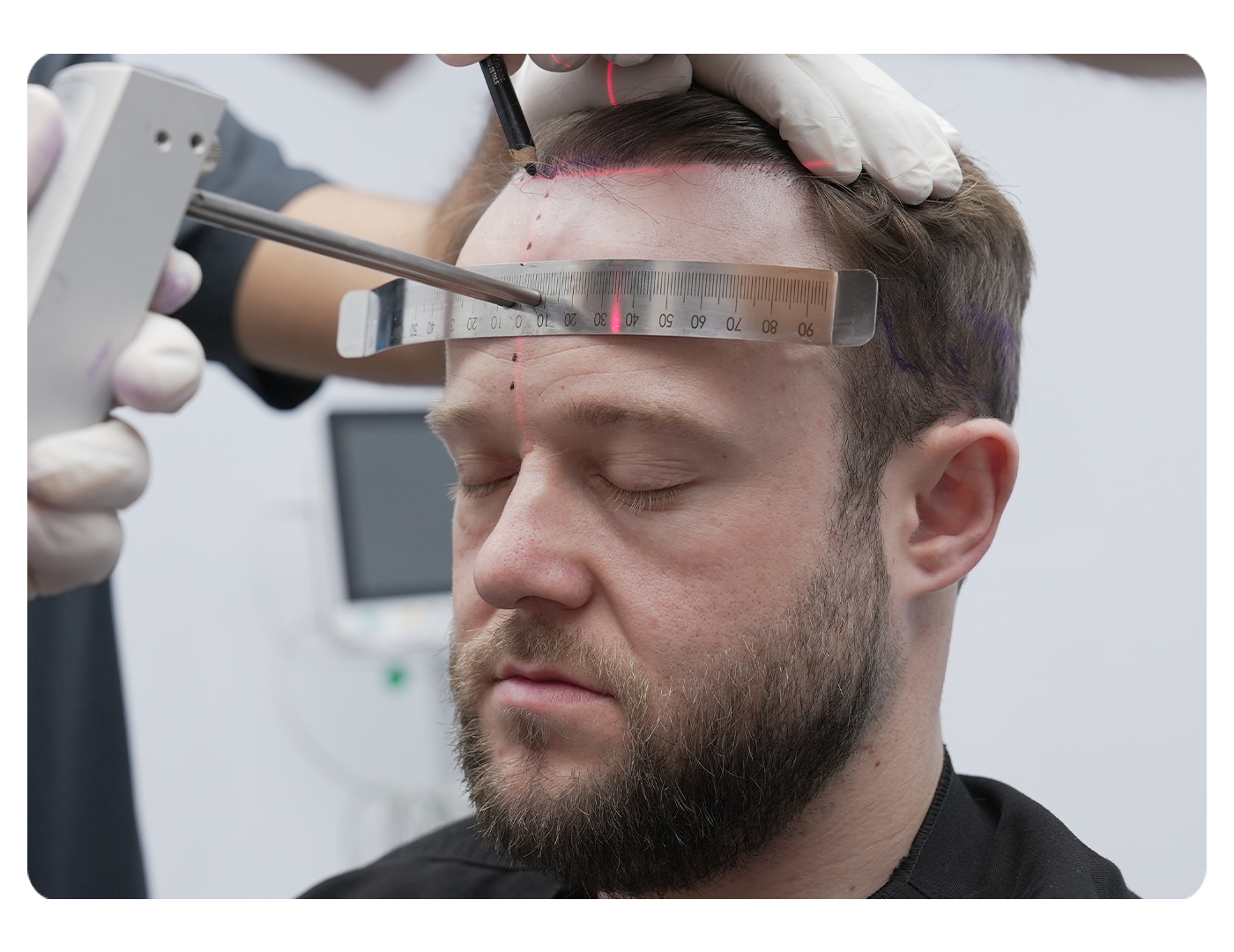

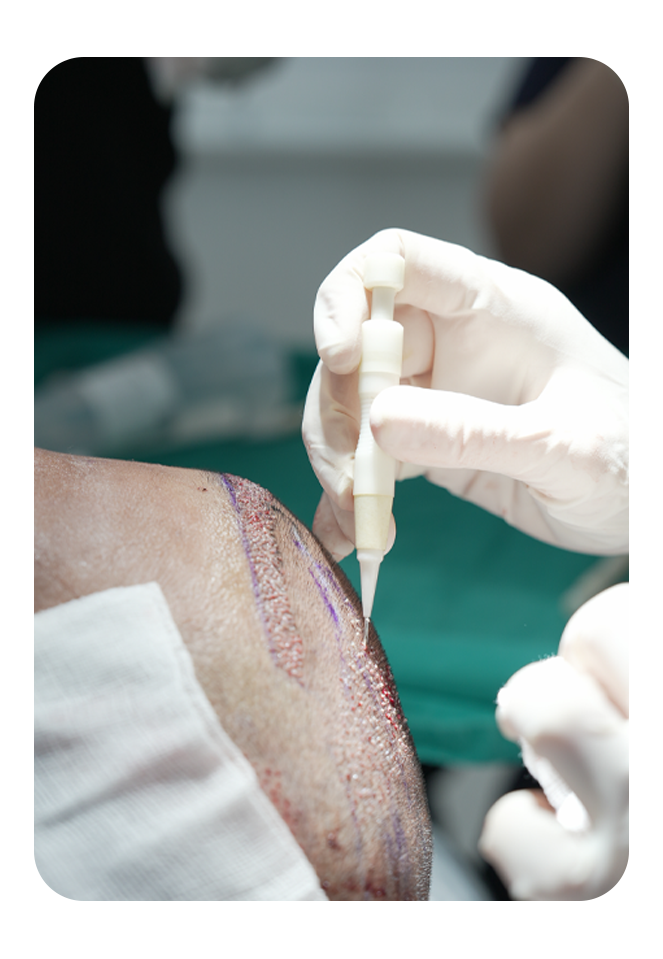
Il trapianto di capelli DHI viene eseguito utilizzando una penna Choi durante la creazione dei canali. Questo piccolo dispositivo, a forma di penna a sfera ad incastro, ha un rivestimento esterno in Teflon ed è progettato per resistere a temperature fino a 130 gradi Celsius. L'ago punta all'estremità della penna sono dove vengono posizionati gli innesti. Questo ago assomiglia a un iniettore ma è verticale e le estremità sono seghettate. Le estremità seghettate sono realizzate in questo modo in modo che gli innesti di capelli possano essere inseriti nell'ago prima del trapianto.brbr Per un processo medio di trapianto di capelli DHI, vengono utilizzate da 4 a 6 penne implanter. Il metodo si compone di due fasi. La prima fase prevede il posizionamento del follicoli piliferi nella penna. A questa fase partecipano uno specialista e due assistenti e deve essere completata in tempi brevi. Follicoli piliferi prelevati da Petri i piatti vengono posizionati all'interno della penna uno per uno. Questi follicoli piliferi vengono inseriti nell'ago facendoli scorrere.brbr La seconda fase prevede il trapianto degli innesti inseriti all'interno dell'ago. Si avvicinano le punte degli aghi con gli innesti all'interno zona glabra con un'angolazione adeguata e la pelle viene forata con l'ago. A questo punto si preme la penna dall'alto. Dopo il follicolo pilifero quando l'estremità dell'ago viene spinta nel foro nell'area priva di peli, il trapianto di capelli DHI è completo.brbr È importante notare che, come per qualsiasi applicazione, un trapianto di capelli DHI deve essere eseguito da uno specialista. La dimensione dei fori praticati nel la pelle è di particolare importanza durante il processo e non vi è alcuna possibilità di successo se i buchi sono troppo grandi.
Il metodo DHI consiste nel seguente processo:- Design dell'attaccatura dei capelli.
- Anestesia.
- Estrazione degli innesti.
- Impianto degli innesti utilizzando penne Choi.
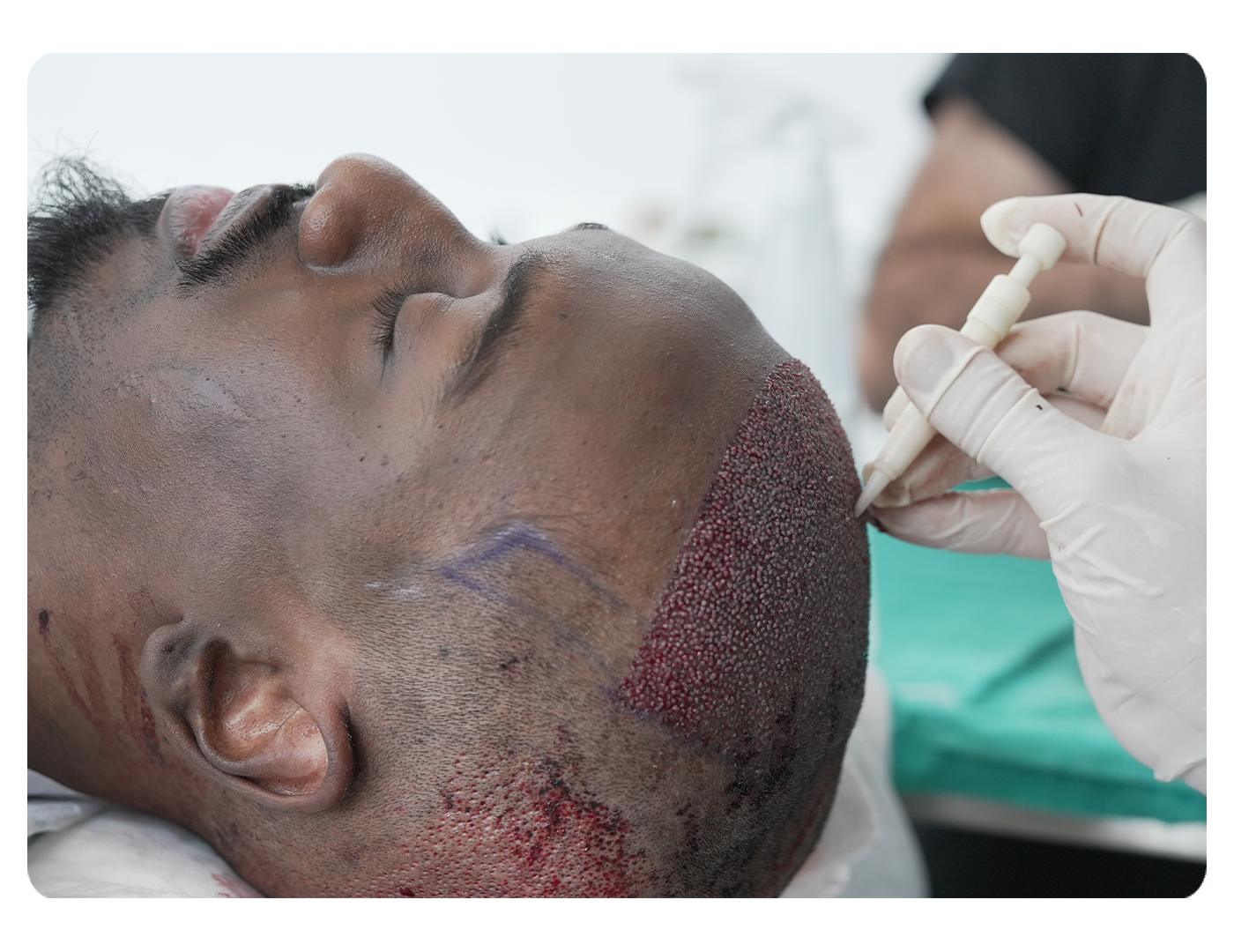
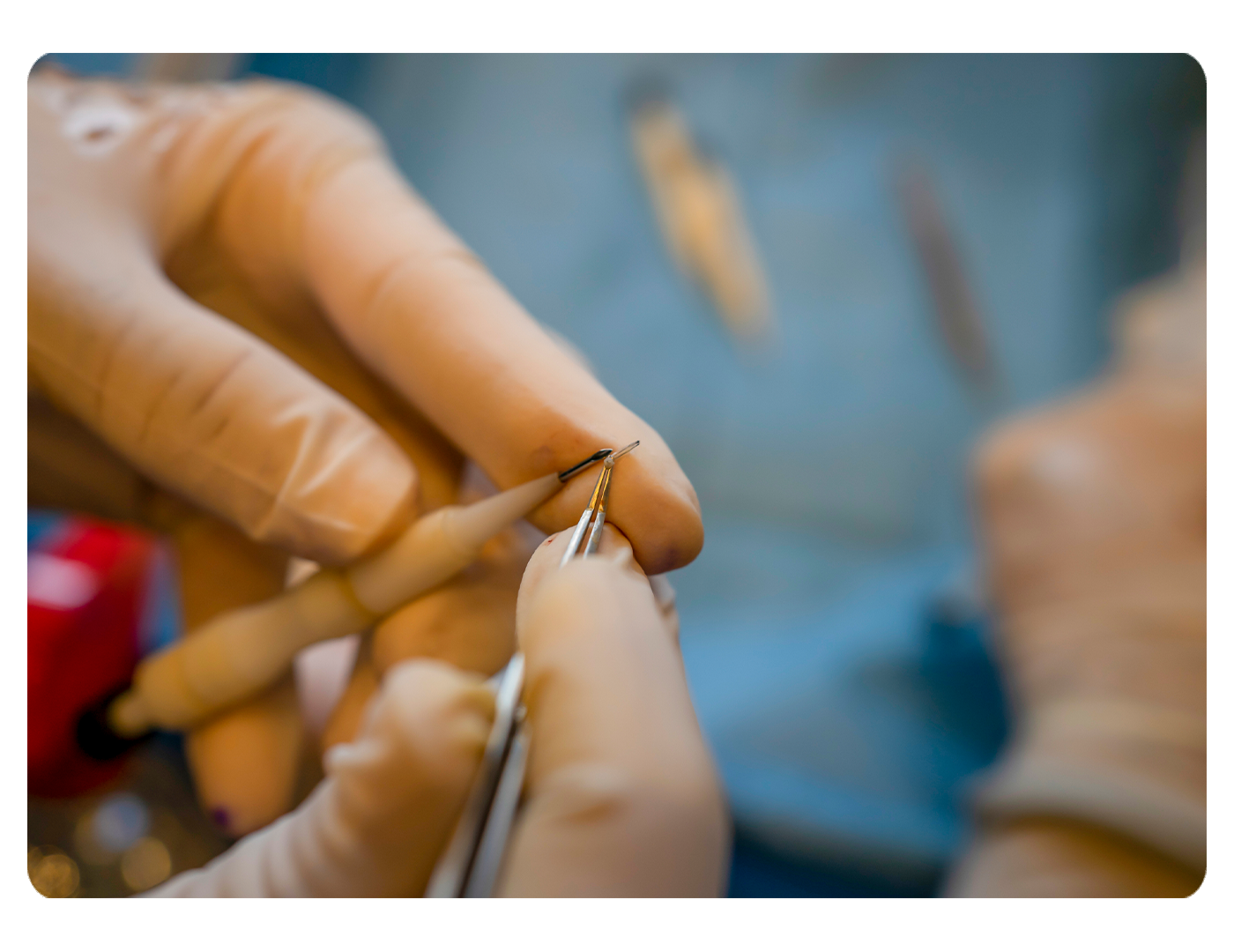
- bPosizionamento accurato degli innesti: DHI consente un controllo preciso sull'angolo, la direzione e la profondità dell'impianto del follicolo pilifero, ottenendo un'attaccatura dei capelli dall'aspetto naturale.
- bMeno invasivo: Il DHI comporta una gestione minima degli innesti e non richiede la creazione preventiva di canali sulle aree riceventi.
- bNessun bisturi: La tecnica DHI non prevede l'uso del bisturi, il che porta a meno cicatrici e a tempi di recupero più rapidi.
- bMaggiore sopravvivenza degli innesti: Poiché gli innesti vengono impiantati immediatamente dopo l'estrazione, il loro tasso di sopravvivenza può essere più elevato rispetto alle tecniche in cui gli innesti vengono conservati prima dell'impianto.
- bAdatto a vari tipi di capelli: DHI può essere utilizzato per diversi tipi di capelli, compresi quelli ricci o ondulati, poiché l'impianto preciso consente risultati naturali.
- bTecnica unica: La tecnica di impianto diretto di capelli (DHI) è un po' più complessa dei metodi di trapianto di capelli di base e richiede medici e un team specializzato con formazione e competenze specifiche.
- bQuantità di innesto limitata: A causa della natura sensibile del tempo della procedura, il DHI potrebbe non essere l'ideale per sessioni di innesto molto grandi in un'unica seduta.
- bCosto più elevato: La tecnica avanzata e l'esperienza richiedevano costi più elevati rispetto ad altri metodi di trapianto di capelli.
- bDurata prolungata del processo.: L'esecuzione del DHI richiede tempo perché ogni innesto deve essere posizionato con molta attenzione.
- bRisultati basati sull'abilità: L'efficacia del metodo DHI dipende molto dalla competenza e dall'esperienza del team medico. Ciò può comportare diversi livelli di successo quando diversi professionisti utilizzano il metodo.
FREQUENTLY_ASKED_QUESTIONS
La procedura di trapianto di capelli non modifica il colore naturale dei capelli esistenti. Il trapianto di capelli consiste nel trasferire i follicoli piliferi dall'area donatrice all'area ricevente, consentendo la crescita di nuovi capelli. I capelli trapiantati avranno le stesse caratteristiche di quelli dell'area donatrice, quindi il loro colore non cambierà. I capelli trapiantati cresceranno del colore originale, in base alla composizione genetica dei follicoli piliferi.
Durante il trapianto di capelli, il dolore o il disagio sono generalmente minimi. Prima dell'intervento viene generalmente somministrata un'anestesia indolore, che contribuisce a ridurre o eliminare la sensazione di dolore nell'area trattata. Di conseguenza, la maggior parte delle persone può rimanere a proprio agio durante l'intervento.
Noi, come famiglia del Long Hair Center, ci teniamo a farvi trascorrere un piacevole soggiorno in Turchia. Per questo motivo, il vostro familiare o amico può venire con voi e non ci sono costi aggiuntivi come il trasferimento dall'hotel all'aeroporto.
Il trapianto di capelli e il trapianto di barba possono essere eseguiti insieme. Questo approccio può essere un'opzione per le persone che soffrono di perdita di capelli e di barba. Le procedure si basano su principi simili. Nel trapianto di capelli, gli innesti prelevati dalla parte posteriore del cuoio capelluto sono collocati nelle aree di perdita dei capelli, mentre nel trapianto di barba, gli innesti sono analogamente prelevati dall'area donatrice e trapiantati nell'area della barba. Quando il trapianto di capelli e quello di barba vengono eseguiti insieme, il processo di pianificazione deve essere eseguito con attenzione, tenendo conto degli obiettivi estetici. L'attaccatura dei capelli e la linea della barba devono essere armoniose e si deve ottenere un risultato naturale. Tali procedure devono essere eseguite da un medico specializzato nel trapianto di capelli. Viene adottato un approccio personalizzato e il processo di valutazione e pianificazione viene condotto meticolosamente per ottenere il risultato desiderato.
Le donne che soffrono di perdita o diradamento dei capelli possono ottenere una chioma più folta grazie all'intervento di trapianto di capelli. Tuttavia, la perdita di capelli nelle donne è generalmente diversa da quella degli uomini e occorre considerare alcuni fattori importanti quando si pianifica un intervento di trapianto di capelli. Le donne richiedono un approccio più delicato al trapianto di capelli e gli specialisti lavorano meticolosamente per ottenere un risultato naturale ed equilibrato. È importante che le donne si consultino con uno specialista del trapianto di capelli per determinare se sono candidate idonee al trapianto di capelli e che prima dell'intervento venga effettuata un'attenta valutazione.
La determinazione del numero di sedute di trapianto di capelli può variare a seconda della condizione dei capelli dell'individuo, del metodo di trapianto scelto e delle raccomandazioni del chirurgo. In generale, per determinare il numero di sedute di trapianto di capelli si prendono in considerazione i seguenti fattori:
-Valutazione del grado di perdita dei capelli.
-Valutazione della salute e dell'adeguatezza dell'area donatrice.
-Selezione del metodo di trapianto di capelli (FUE o DHI).
-Considerazione degli obiettivi individuali di trapianto di capelli.
-Considerazione delle raccomandazioni e della valutazione individuale del chirurgo.

 Deutsch
Deutsch
 English
English
 français
français
 italiano
italiano
 Türkçe
Türkçe
 русский
русский
 한국어
한국어


